It’s raining, it’s pouring…teaching plurals doesn’t have to be boring! Here are a few plural noun activities that are fun for kids and perfect for spring.
A simple little intro game for plurals (and it works great for other skills too!) is called “Guess the Category.” I draw a circle map on the white board with a question mark in the middle.
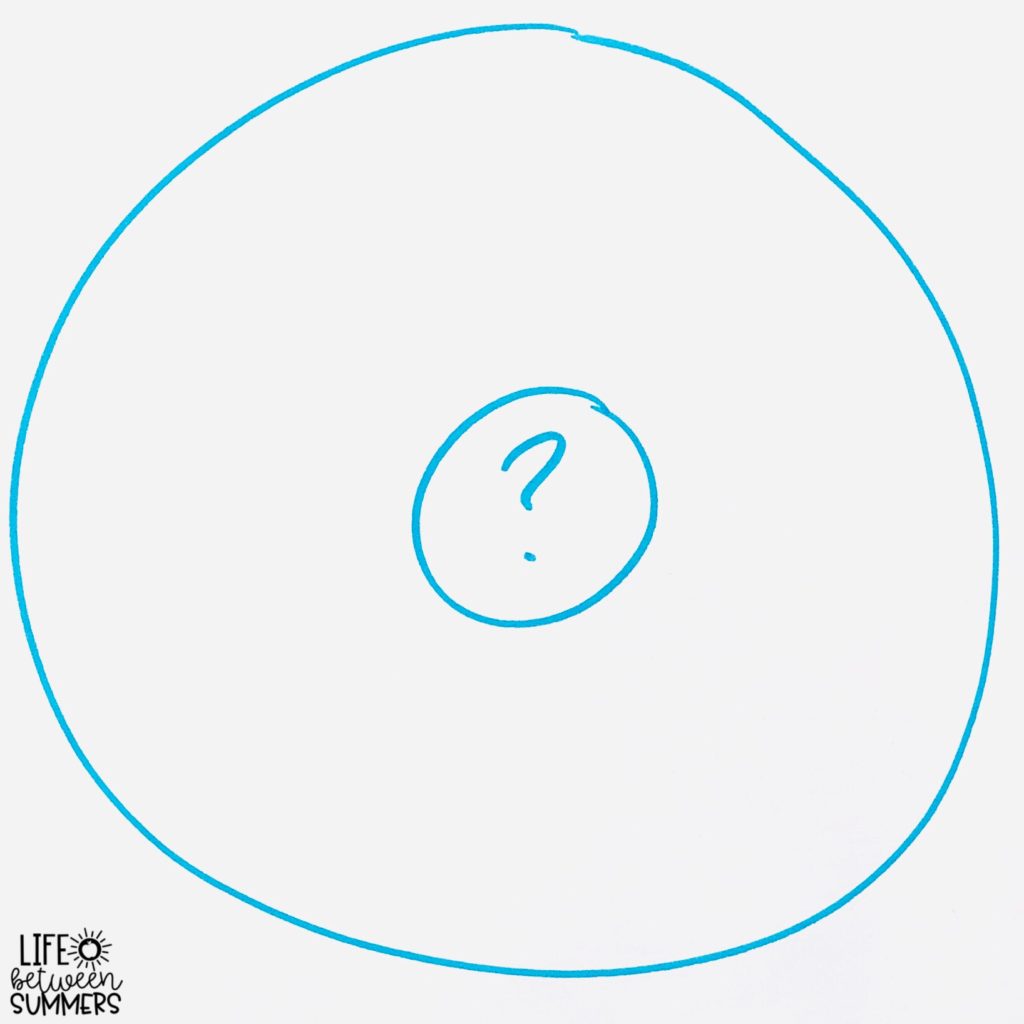
Then I begin writing words one at a time that fit a particular category. For plurals, it might look something like this:
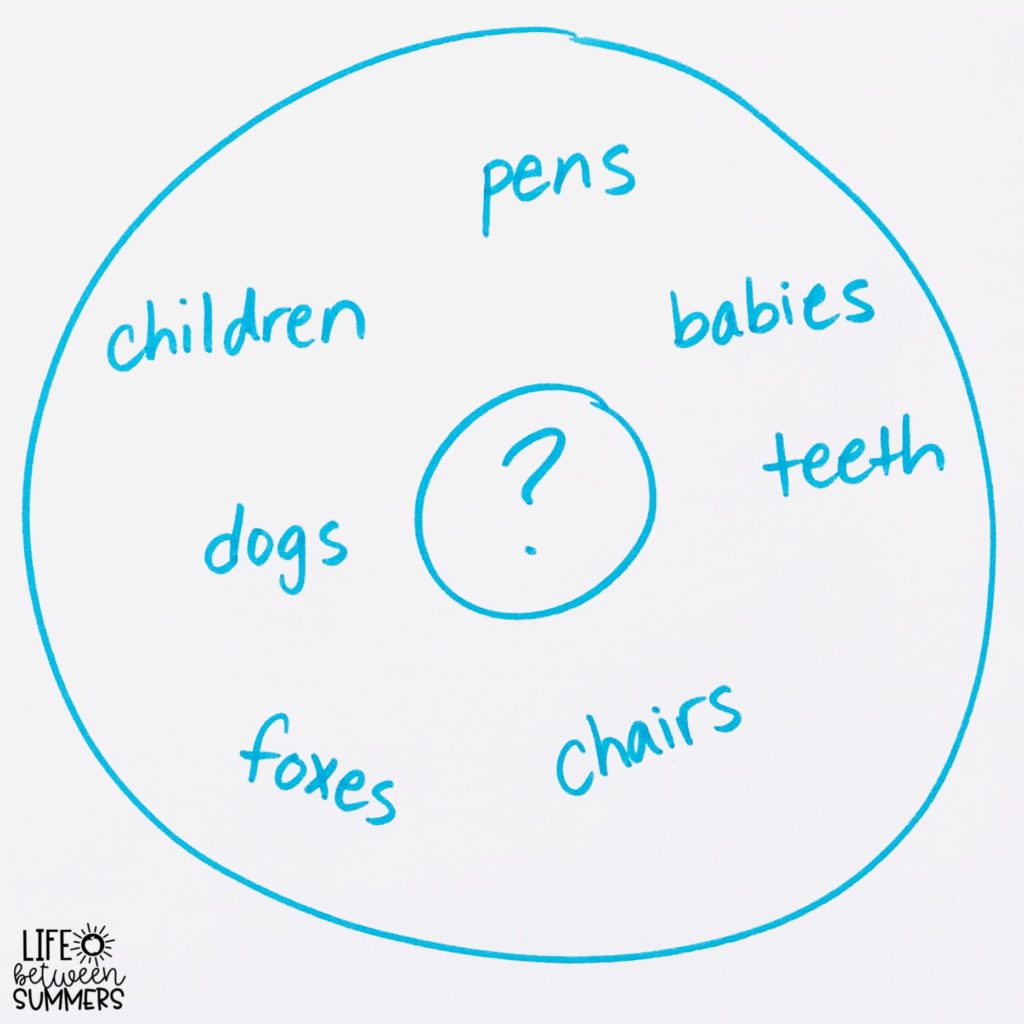
I tell the kids to put their finger on their nose (or their hands on their head, or any other visual cue) when they think they’ve figured out what the words have in common. Once a decent number of students have shown that they think they’ve got it, I stop adding words but don’t have them share their guesses quite yet.
Instead, I ask if they can think of any of their own words that would also fit in the same category. I have them share their ideas with a partner first, and then I call on individual students to share with the whole class. I add the words they thought of inside the circle map if it fits the category (if it doesn’t, I write it on the outside of the circle map so that students can later have a discussion about why it doesn’t belong).
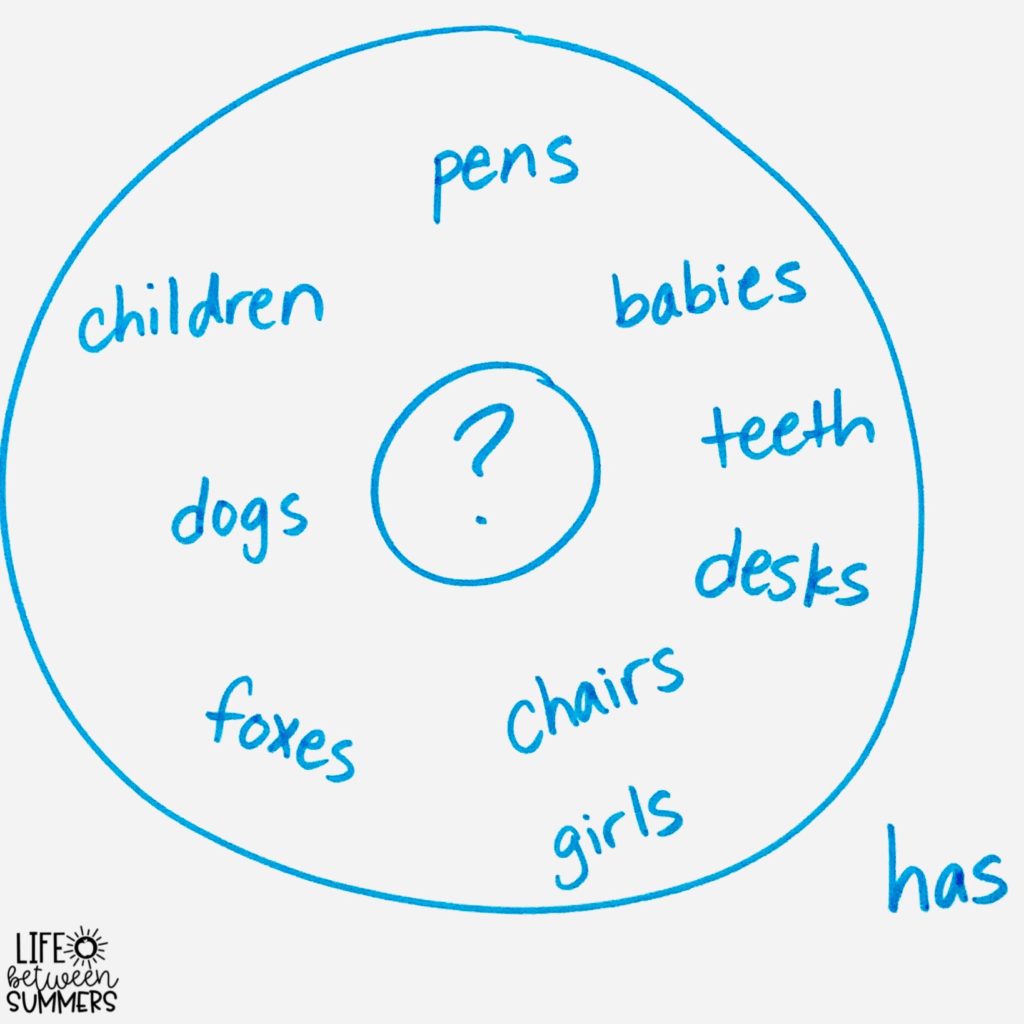
Once we’ve added some of the words that they come up with on their own, I have them share their official guesses as to what the category is with a partner, and then with the whole group.
The kids don’t usually come up with the term “plurals” right off the bat when trying to guess the category. They might say, “nouns” or “words that end with s,” but then another student will disprove that by saying, “Children and teeth are up there and they don’t end with s.” This eventually leads us to “nouns that mean more than one.” We talk about how these are called plurals, and this is when I erase the question mark and write “Plurals” in the middle of the circle map.
The next day, I pass out a copy of a plurals poem/song and a tree map.
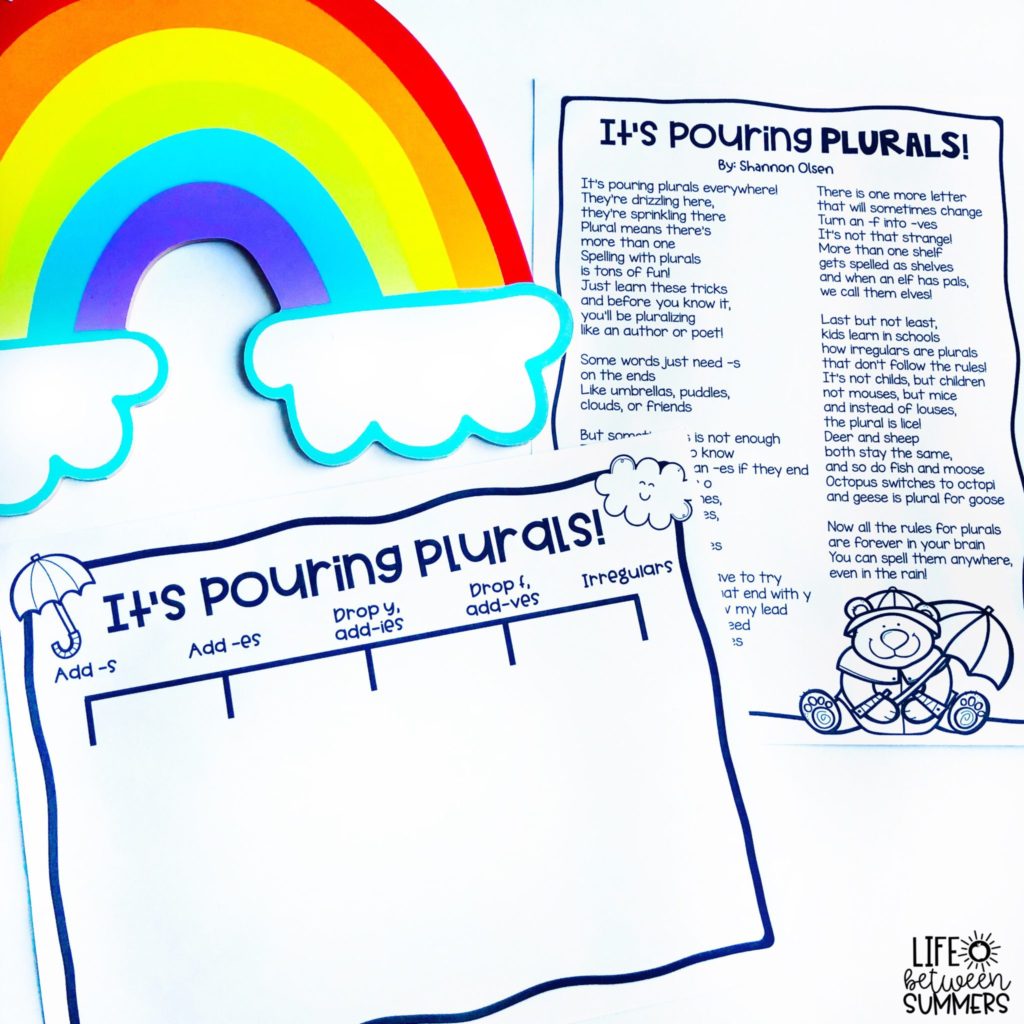
We do a few readings of the poem. Choral reading (all together), echo reading (repeating after the teacher, and then repeating after a student reader), partner reading, etc. Then I have the kids go back and highlight all the words they can find in the poem that are plural. As they share what they’ve found, I highlight the plurals on my copy as a visual for the whole class.
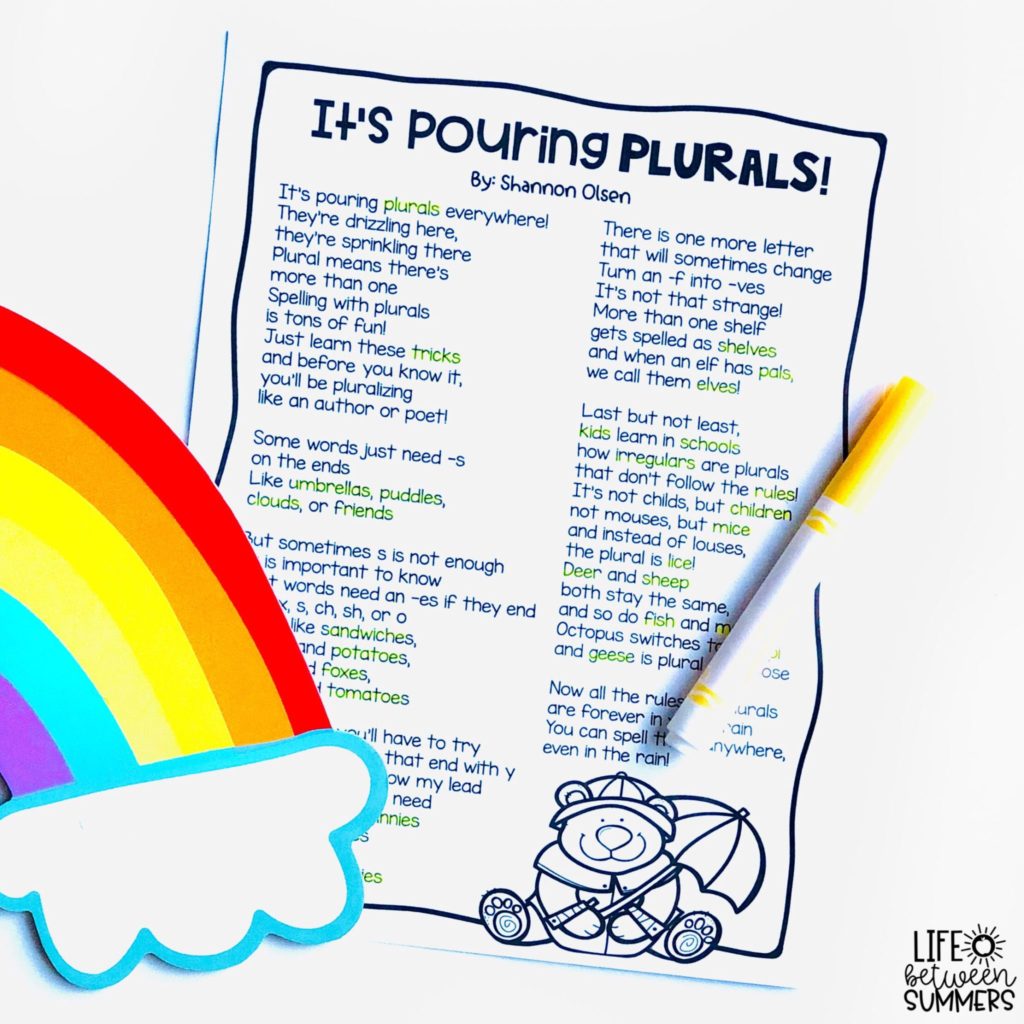
Once we’ve finished highlighting, students sort those words according to the spelling rules they follow and write them on the tree map. I have them brainstorm some ideas of other words that are not in the poem too.
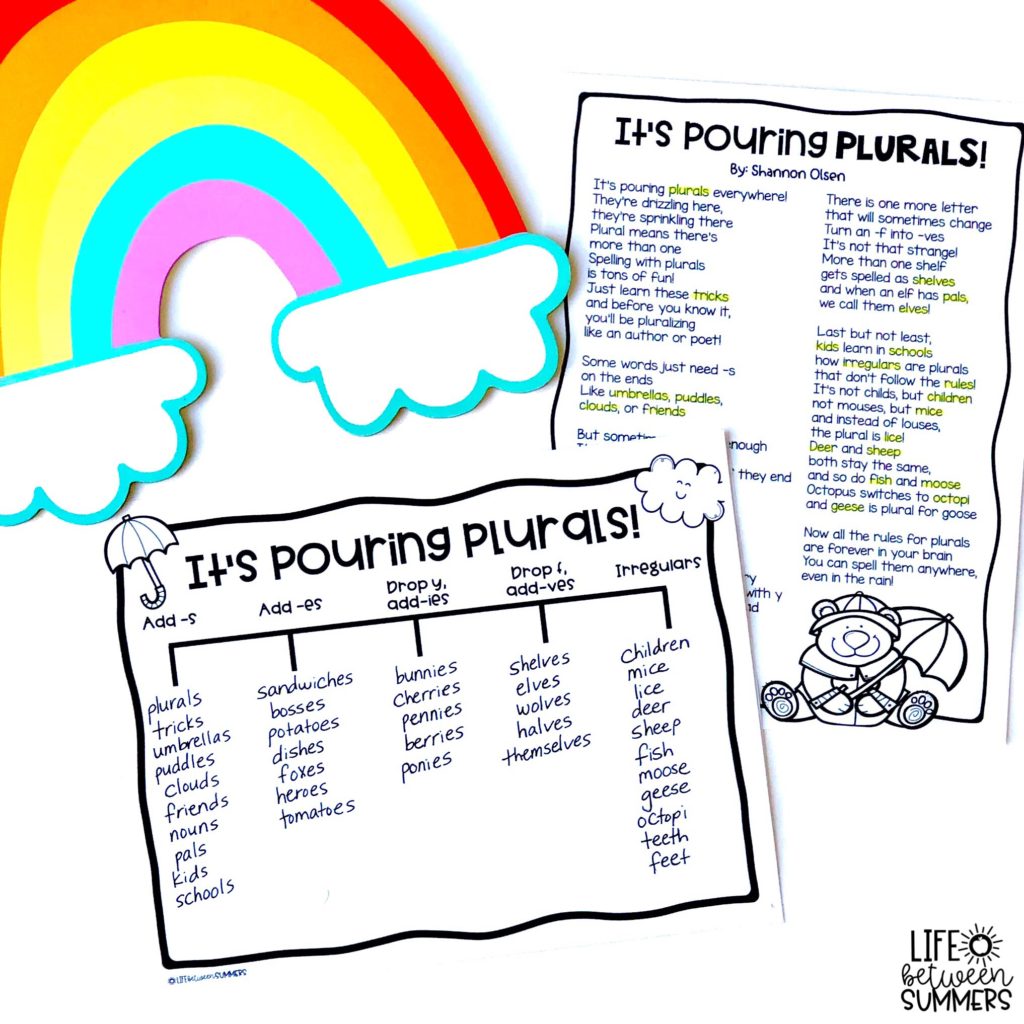
We also do some basic hand motions for each of the spelling rules to help them stick.
-s
We say “Just add s!” while drawing an s with our pointer finger.
-es
We chant “X, S, O, CH, SH!” As we say each letter, we first tap our left shoulder (X), right shoulder (S), clap our hands (O), tap our left knee (CH), and tap our right knee (SH) to remind ourselves what a word has to end with in order to add an -es.
-ies
We make a “Y” in sign language and then lower it with our hand say “Drop the Y, add -ies” (and we spell i, e, s in sign language as we say each letter).
-ves
We make an “F” in sign language and say “Drop the F, add -ves” (and spell v, e, s in sign language as we say each letter).
irregulars
We say, “Irregulars don’t follow the rules!” and wave our finger back and forth as if scolding someone.
On the last day, the kids do a craftivity that gets displayed in the classroom for spring. It goes along nicely with the poem and makes for a great seasonal bulletin board.
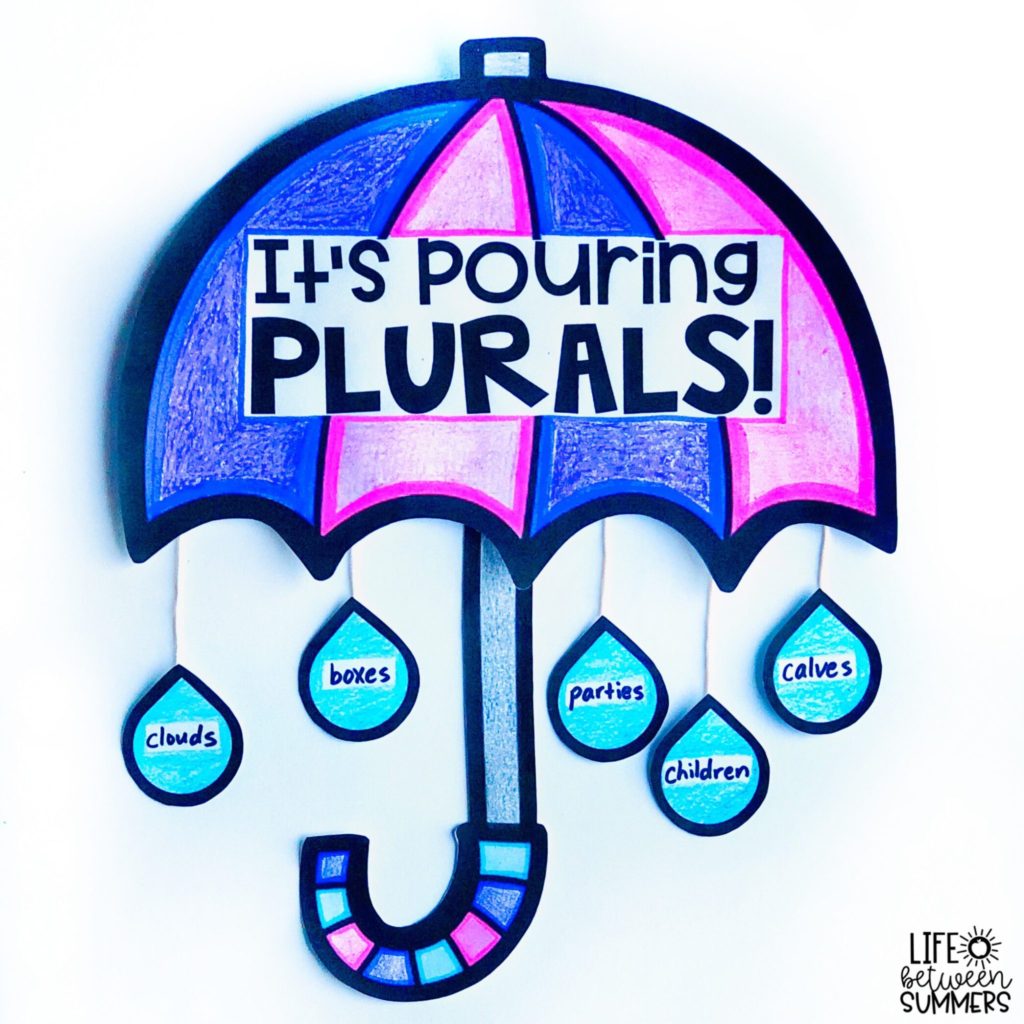
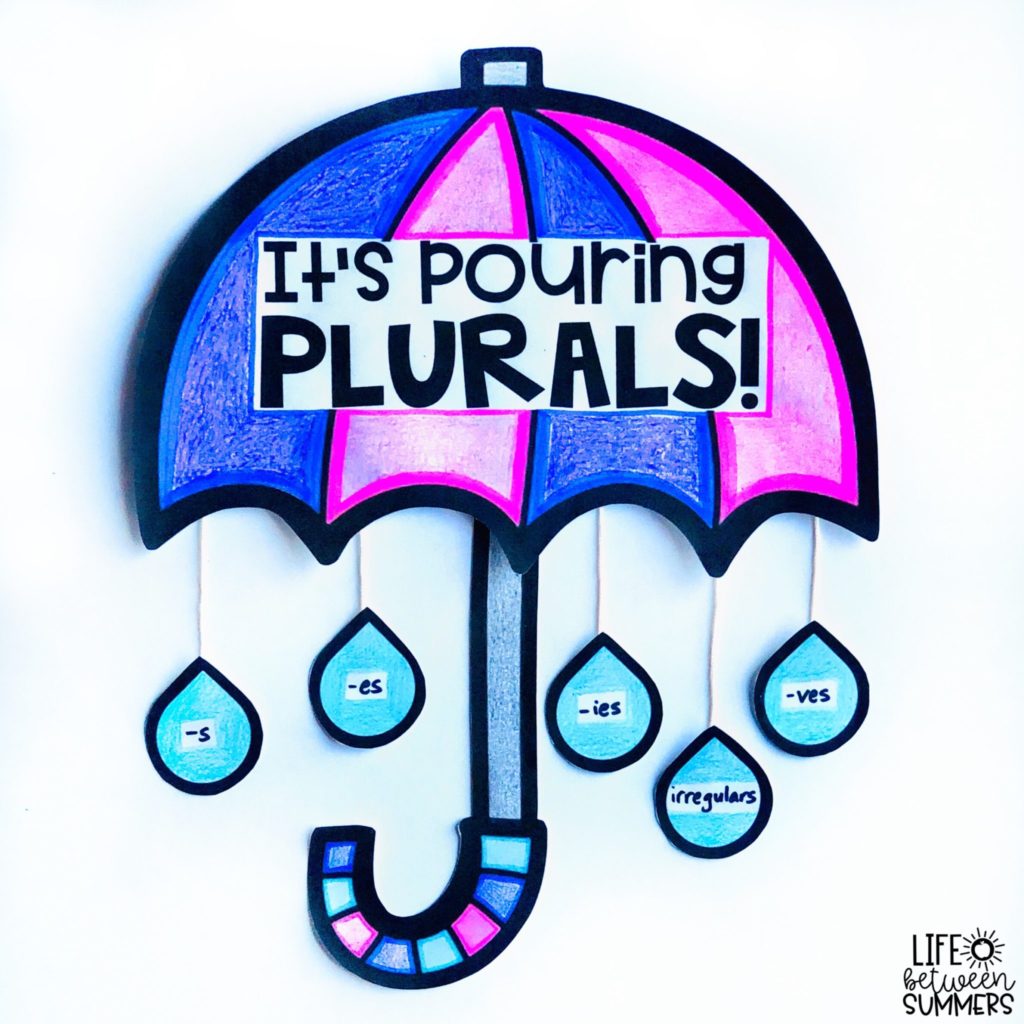
On one side of the raindrop, they write the plural rule, and on the other, they write an example of a word that follows the rule. I thought hearts would make for a cute alternative to raindrops, so I have a template for those too:
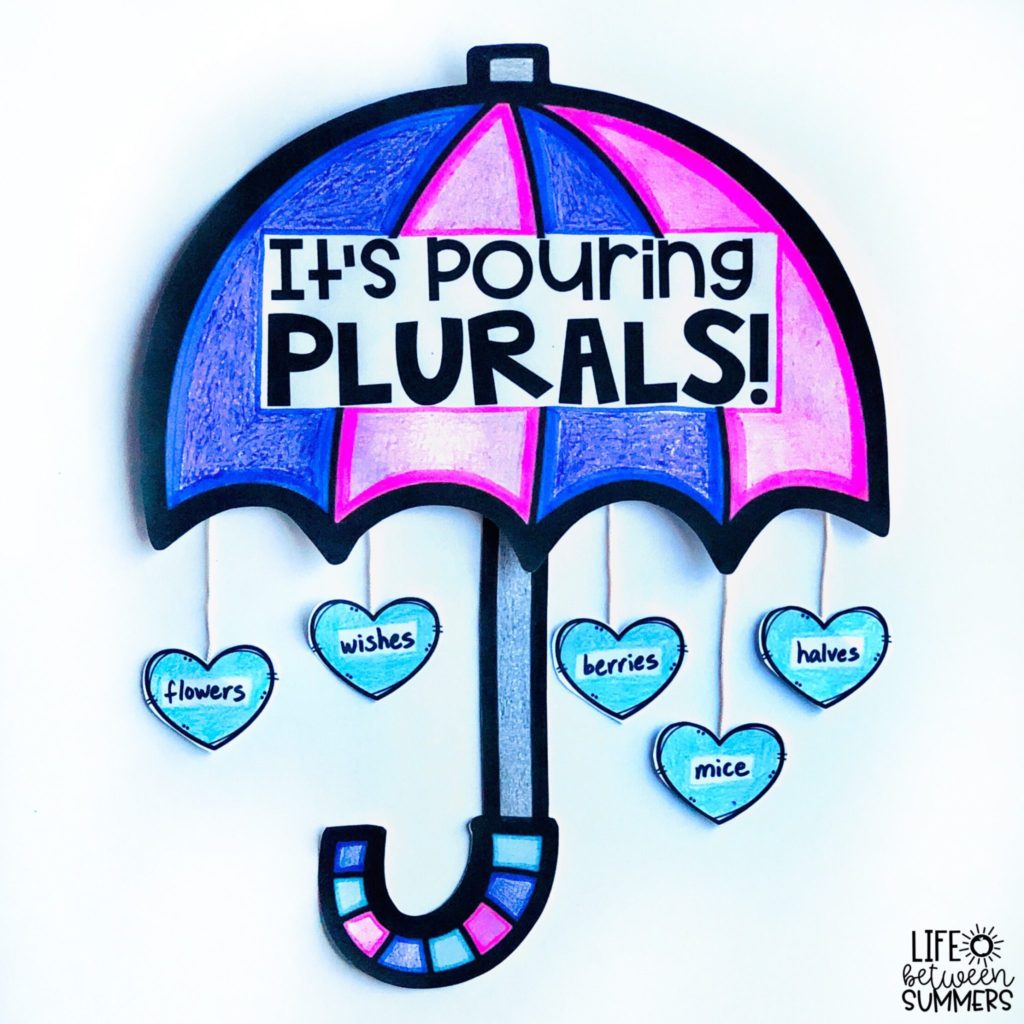
The poem, tree map, and templates for the umbrella craft are all available in my online shop, and also in my TPT store.
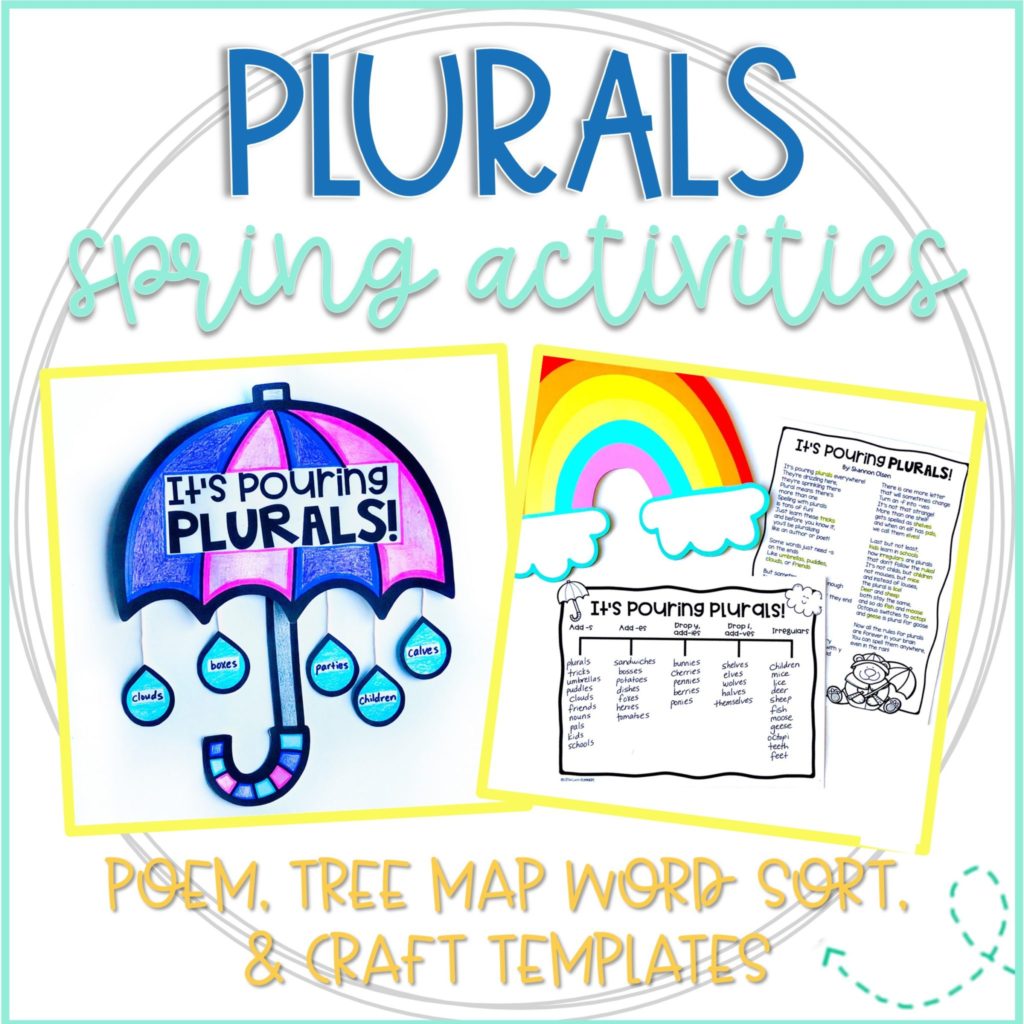
Need more teaching ideas for spring? I’ve shared a whole bunch of them for ELA and math in this blog post:
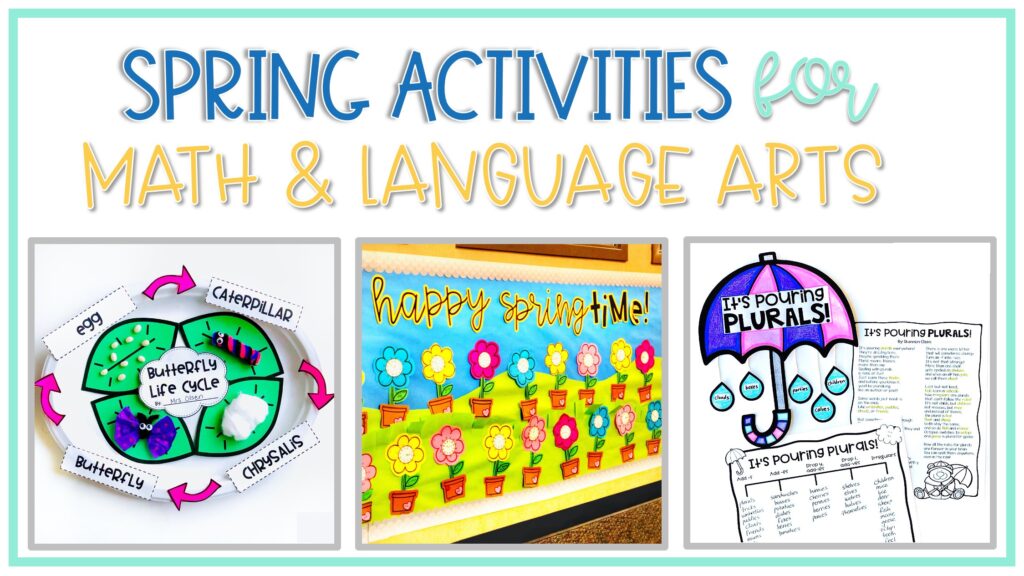
Well, I started this post with a rainy day song lyric, so let’s finish it with one:
“When the sun shines, we shine together.” -Rihanna, Umbrella
If you do decide to try these activities out, I hope they help your students shine! Do you have any favorite strategies for teaching plurals? I’d love to hear more than one 😉


Leave a Reply
You must be logged in to post a comment.